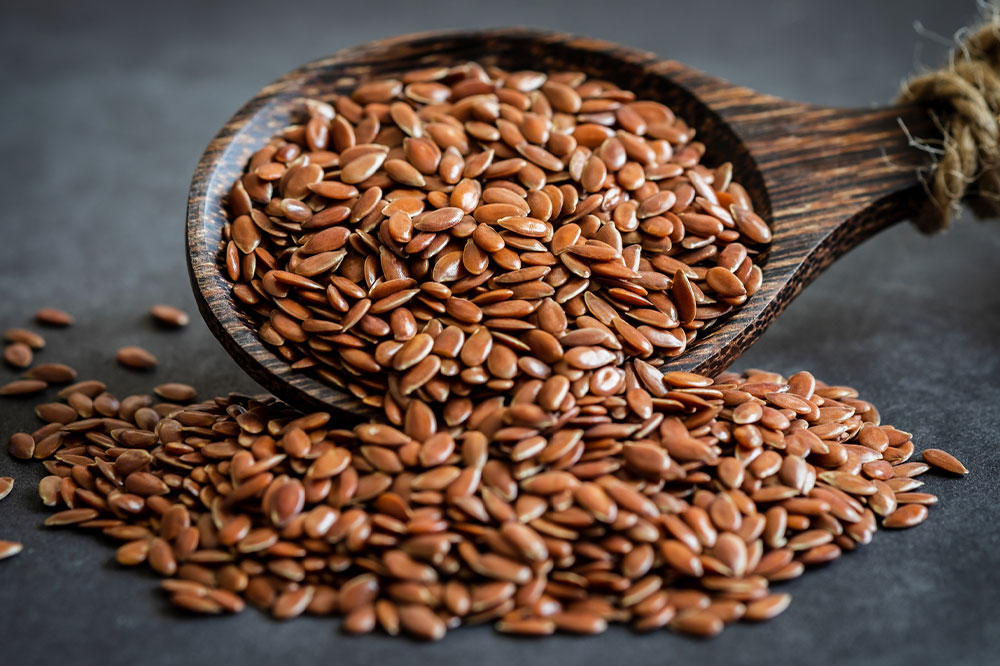5 foods that can help lower the risk of cancer

No nutrition plan in the world can prevent cancer. However, research shows that some food items can help lower the risk to a certain extent. So, if a person has a family history of the disease, making tiny food changes can impact their health positively in the future. This article lists five healthy foods that can help lower cancer risk. It also talks about a few medications that can be useful in treating certain cancers.
Flaxseeds
Flaxseeds are high in fiber and omega-3 fatty acids. According to a study, eating 25 grams of flaxseeds helps prevent tumor growth in prostate cancer. Flaxseeds also lower estrogen levels, which is linked to cancer prevention.
Broccoli
Broccoli has potent anti-cancer and anti-inflammatory properties. It contains components called glucosinolates that produce protective enzymes while passing through the digestive system. These enzymes help detoxify harmful chemicals, lowering cancer risk.
Kale
Kale is a rich source of antioxidants. It also has vitamins A, B1, B6, C, and K and minerals like copper, manganese, and calcium. Due to these properties, Kale is a strong firewall against prostate, colon, lung, and breast cancer.
Olive oil
Olive oil is rich in oleocanthal, antioxidants, and acids that have anti-cancer properties. It penetrates the membrane of cancer cells and makes them inactive or benign. Healthy consumption helps prevent breast cancer and digestive tract cancers.
Garlic
Garlic has an active anti-cancer compound called allicin. One study concluded that people who ate allicin vegetables had a lower stomach cancer risk. One must have two to five grams (or one clove) of garlic daily.
These foods can only help lower cancer risk and not prevent it. Those who already have the disease can use the following treatments after consulting a doctor:
(CAR) T-cell cancer therapy
Chimeric antigen receptor (CAR) T-cell therapy is a method to get a kind of white blood cells called T cells to fight cancer. It’s done by genetically modifying T cell genes in a laboratory.
Neulasta® (pegfilgrastim)
This is a prescription medicine that stimulates the growth of white blood cells lost during chemotherapy. Neulasta® is injected under the skin and reduces the chances of infection.
IMBRUVICA® (ibrutinib)
IMBRUVICA® is used to treat mantle cell lymphoma, chronic lymphocytic leukemia (CLL), and small lymphocytic lymphoma (SLL). It blocks the growth of a protein that leads to cancer.
VENCLEXTA® (venetoclax)
This medicine inhibits a protein in cancer cells so that the body doesn’t resist chemotherapy. It’s used to treat CLL or SLL in adults in combination with rituximab. For acute myeloid leukemia, VENCLEXTA® is used in combination with azacitidine, decitabine, or low-dose cytarabine.
LUMAKRAS™ (sotorasib)
This prescription medicine is used to treat non-small cell lung cancer where tumors have the KRAS G12C genetic mutation.
KYPROLIS® (carfilzomib)
Sold under the brand name KYPROLIS®, Carfilzomib is a prescription injection used for the treatment of multiple myeloma. It helps in stopping or slowing the growth of cancer cells in the body. Carfilzomib belongs to a class of medications known as proteasome inhibitors. This medicine is typically given by a doctor in a 28-day treatment cycle. This means that patients will receive doses only a few days in a week. A Carfilzomib injection may result in life-threatening reactions for up to 24 hours. Hence, doctors prescribe other medications to prevent such severe reactions. But if reactions still occur, the patient must inform doctors immediately.
OPDIVO® (nivolumab)
OPDIVO® (nivolumab) is a kind of immunotherapy to treat different cancers, such as melanoma, colorectal cancer, and advanced-stage lung, kidney, and liver cancer. It is usually administered intravenously every two weeks and is often used in combination with YERVOY® (ipilimumab). The side effects can include fatigue, rash, decreased appetite, diarrhea, shortness of breath, and pain in the muscles, bones, and joints.